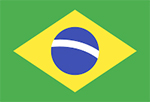Durval de Goés Monteiro Avenue Bike Lane Now Fully Completed

Dedicated bike path stretches from the BR-316 overpass to Fernandes Lima Avenue
Maceió, November 6, 2025 - Braskem has completed another project as part of its package of initiatives to improve urban mobility in Maceió. The new bike lane along Durval de Goés Monteiro Avenue spans 5.7 kilometers and has already become part of the daily routine for hundreds of people who use their bicycles for commuting, exercise, or leisure.
Located in the avenue's central median, the exclusive bike path runs from the BR-316 overpass all the way to Fernandes Lima Avenue, near Parque do Horto. The work is part of a larger project to expand the avenue, which also includes the construction of new side roads, accessible sidewalks, a new rainwater drainage system, upgraded power lines and street lighting, as well as expanded parking areas.
The implementation of measures to enhance urban mobility is part of the Socio-Environmental Agreement signed in December 2020 by the Federal Public Ministry (MPF) and Braskem, with participation from the State Public Ministry (MPE) and support from the Municipality of Maceió. The initiatives continue with an initial BRL 360-million budget, adjusted annually, paid by Braskem. The interventions are planned by the municipality and overseen by the government.
Improved Safety
A national survey called Cyclist Profile, conducted in 2021 by the organization Transporte Ativo (Active Transportation) and the Sustainable Mobility Lab at the Federal University of Rio de Janeiro (Labmob-UFRJ), found that 91.5% of cyclists interviewed in Maceió use their bicycles as their main mode of transportation to work. Nearly a decade earlier, in 2012, the Rua Viva Institute estimated that between two and three thousand cyclists rode along Durval de Goés Monteiro Avenue every day.
Graphic designer Omar Chagas is one of the many people who cycle there daily. For the past three years, he has been commuting entirely by bike and says that one of the biggest benefits of the new lane is the sense of safety it brings. "Before, we had to ride on the shoulder, right next to cars. It was risky. Now I save time and gas, I don't pollute, it's great for my health, and I feel safer and have a better quality of life. It's the best of both worlds," he says.
Beyond his daily commute, Omar also enjoys weekend rides with friends along the new route. "On our rides, we use the dedicated lane for most of the way, and it's made our outings easier and more enjoyable. We've seen more and more groups coming together to cycle," he adds.
Biomedical scientist Pedro Paulo Costa, who's been cycling for four years, agrees that the new infrastructure has made a big difference. "Before the bike lane, riding here was much more dangerous. We had to share the road with cars and buses, which increased the risk of accidents. With heavy traffic and some impatient drivers, it could get stressful. Now, being able to ride calmly without worrying about traffic has changed everything," he explains. He also believes the new path encourages more people to take up cycling and strengthens the local cycling community.
More Bike Lanes on the Way
In addition to the Durval de Goés Monteiro Avenue bike lane, another one was recently built along Menino Marcelo Avenue, stretching 1.3 kilometers. There are also plans for an additional 2.3 kilometers of bike lanes along the new Via de Ligação, now under construction between Durval de Goés Monteiro and Menino Marcelo Avenues, and another 2.1 kilometers in the Camerino System, which will connect Fernandes Lima Avenue and Farol to Maceió's southern region. Altogether, the city will gain over 11 kilometers of new bike lanes.
Improved Accessibility
The city's mobility enhancement projects also include over 25 kilometers of accessible sidewalks with tactile paving and ramps for people with reduced mobility. Ten pedestrian crossings with push-button signals and audible alerts have been installed along Durval de Goés Monteiro and Fernandes Lima Avenues.



 EN
EN

